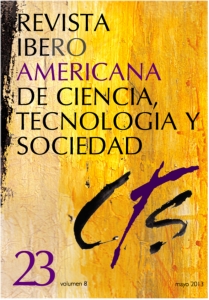Habitat Living Lab, social and technological innovation network
DOI:
https://doi.org/10.52712/issn.1850-0013-646Keywords:
social innovation, technological innovation, networks of innovation, ICTAbstract
Habitat Living Lab is a network of organizations that aims at developing and applying eco-friendly technologies with low income communities to improve their housing conditions. This article reports Habitat formation from an NGO followed by its interaction with the university. Maturation of the relations among the community, the NGO and the University led to the formalization of Habitat when it joined the European Network of Living Labs (ENoLL) in 2010. The Laboratory of Supporting Technologies for Collaborative Networks (LabTAR) was created for practice and reflection of network projects. Information and communication technologies (ICT) became relevant to promote interaction and innovation. Habitat’s path reveals that this model is feasible. The NGO’s work has already produced social innovation but the projects of technological innovation which began in 2010 are underway. Key elements for Habitat’s good results are: an organization truly committed to the development of the community, collaborative work based on long-lasting partnerships, diverse financial sources, local R&D agency and university policies that value university and community interaction, intensive use of ICT, constant improvement of communication and motivated people.
Downloads
References
DANTAS, V. R. y BISCOTTO, D. B. (2008): “Pesquisa: saberes, fazeres e perfil dosmoradores do Território do Bem”, nº 28, Vitória, Associação Ateliê de Ideias & Forum Bem Maior.
Downloads
Published
How to Cite
Issue
Section
License
Copyright (c) 2024 CC Attribution 4.0

This work is licensed under a Creative Commons Attribution 4.0 International License.
All CTS's issues and academic articles are under a CC-BY license.
Since 2007, CTS has provided open and free access to all its contents, including the complete archive of its quarterly edition and the different products presented in its electronic platform. This decision is based on the belief that offering free access to published materials helps to build a greater and better exchange of knowledge.
In turn, for the quarterly edition, CTS allows institutional and thematic repositories, as well as personal web pages, to self-archive articles in their post-print or editorial version, immediately after the publication of the final version of each issue and under the condition that a link to the original source will be incorporated into the self-archive.











